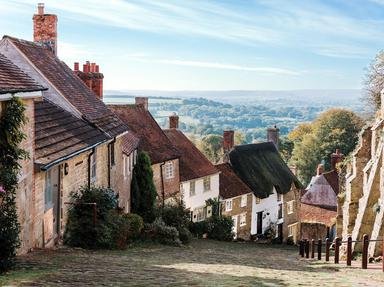Quiz Answer Key and Fun Facts
1. Perhaps nothing is more English than Fish and Chips, England's contribution to the world culinary stage. Did the two individual components, fried battered fish and deep fried potatoes (chips) originate in England?
2. While the royal family represents the entire United Kingdom, and indeed the whole of the Commonwealth of Nations, its roots and origins are very much English. When King Charles was crowned in 2023, who was second in line to the throne?
3. There is nothing more English than the sport of cricket. The Lord's Cricket Ground in London is considered the home of cricket. The very first test cricket match was played there in 1877. True or false?
4. In an English tradition that goes back 900 years, swan upping is an annual event in which mute swans on the River Thames are rounded up, tagged, checked and then released. What does "upping" refer to?
5. Arguably, Charlie Chaplin and Princess Diana were two of England's most recognisable citizens. They would appear to have little in common other than their country of birth. However, from the following options, what attribute did they have in common?
6. The British appear to have a penchant for writing anthropomorphic stories. Who wrote the quintessentially English children's novel "The Wind in the Willows"?
7. The Mini is the car most associated with England. What year was it first released?
8. The Miniskirt will always be associated with England and the "Swingin' 60s". Which English fashion designer was credited with its 'discovery'?
9. The English country garden is almost a cliche though it cannot be argued that the English adore their gardens. Where are the Royal Botanical Gardens?
10. While punk rock as it became to be known was seen as early as the 60s, it crystallised in England in 1977. Besides the music (which was basic), it spawned a subculture of antiestablishmentism. What was *NOT* a feature of a punk rocker's presentation?
11. In 2010 this soap opera was the longest-running TV soap opera in the world. Unlike US counterparts which tended to feature rich and glamourous storylines, this show was grounded in England's working class. What was the name of the show?
12. England was late on to the Skyscraper scene yet towards the end of the 20th century, the skyline took off. In London in particular, tall buildings tended to get nicknames. Which of the following was NOT a nickname for a London skyscraper?
13. The English, in general, have a penchant for self-deprecatory humour which is evident in some of its typically English movies. What was the name of the stereotyped barrister from "A Fish Called Wanda", played by John Cleese?
14. The English seaside is quite the unique institution. Which English seaside town has an observation tower based on the Eiffel tower in Paris?
15. Ah, the proverbial cup of tea. Inextricably inseparable from the English. Noting the chronological order of events depicted below, which of the following was *NOT* a factor in tea becoming the favoured drink of England?
Source: Author
1nn1
This quiz was reviewed by FunTrivia editor
agony before going online.
Any errors found in FunTrivia content are routinely corrected through our feedback system.
